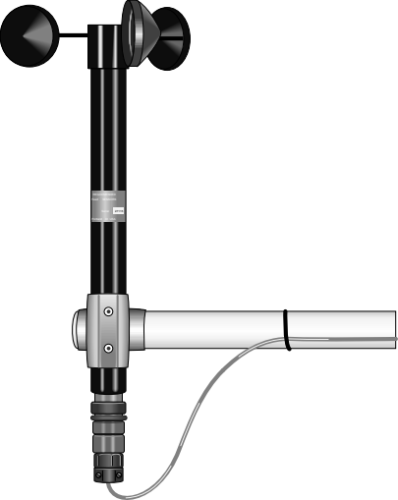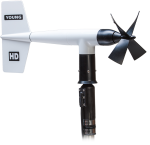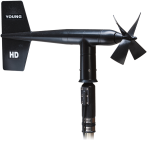
Compatible with all Campbell Scientific dataloggers






Resumen
The 014A, manufactured by Met One, is a three-cup anemometer that monitors wind speed for the range of 0 to 45 m/s with a threshold of 0.45 m/s. It connects directly to a Campbell Scientific datalogger, which measures the 014A's pulse signal and converts the signal to engineering units (mph, m/s, knots).
Leer másVentajas y características
- Ideal para aplicaciones que no requieran medidas de la dirección del viento
- Sealed magnetic reed switch
- Diseñado para funcionamiento en continuo, largo tiempo, desatendido y en condiciones adversas
- Standard aluminum cup assembly has a distance constant of less than 4.5 m
- For greater sensitivity, an optional LEXAN cup assembly has a distance constant of less than 1.5 m
Imágenes



Descripción detallada
The 014A is constructed of corrosion-resistant, stainless-steel and anodized aluminum. It's three-cup anemometer assembly contains a sealed magnetic reed switch. Rotation of the cupwheel produces a pulse that is directly proportional to wind speed.
Preguntas frecuentes
Número de FAQs relacionadas con 014A: 3
Expandir todoDesplegar todo
-
Replacement sensor cables and bearings can be purchased. They can be replaced by the user, but Campbell Scientific recommends factory replacement.
-
A replacement reed switch can be ordered. It can be replaced by the user, but Campbell Scientific recommends factory replacement.
-
The 014A-L sensors use magnets spinning over a mechanical reed switch to sense wind speed. Eventually the mechanical reed switch will fail and will need to be replaced. Replace both the bearings and the reed switch at the same time. For details on replacing bearings and the reed switch, see Appendix C of the instruction manual.
Compatibilidad
Nota: lo siguiente muestra información de compatibilidad notable. No es una lista de todos los productos compatibles.
Dataloggers
| Producto | Compatible | Nota |
|---|---|---|
| CR1000 (retired) | ||
| CR1000X (retired) | ||
| CR1000Xe | ||
| CR300 (retired) | ||
| CR3000 (retired) | ||
| CR310 | ||
| CR350 | ||
| CR6 | ||
| CR800 (retired) | ||
| CR850 (retired) |
Información de compatibilidad adicional
Mounting
The 014A attaches to a Campbell Scientific crossarm using a 1049 Nu-Rail fitting or CM220 Right Angle Mounting Bracket. It also can be attached to the top of our CM110, CM115, and CM120 stainless-steel tripods using the CM216 Sensor Mounting Kit.
Data Logger Considerations
The 014A uses one pulse count channel on the data logger.
Programming
The 014A is read by the PulseCount Instruction in CRBasic and by Instruction 3 (Pulse Count) in Edlog. Wind speed measurements can be taken and processed with any of the data loggers.
Especificaciones
| Sensor | 3-cup anemometer |
| Measurement Description | Wind speed |
| Range | 0 to 45 m/s (0 to 100 mph) |
| Starting Threshold | 0.45 m/s (1.0 mph) |
| Accuracy | 0.11 m/s (0.25 mph) or 1.5% |
| Contact Rating | 10 mA (maximum) |
| Operating Temperature Range | -50° to +70°C |
| Distance Constant |
|
| Cable Description | Quick-connect connector with vinyl jacketed, shielded cable |
| Radius | 10.4 cm (4.1 in.) |
| Height | 34.8 cm (13.7 in.) |
| Sensor Weight | 318 g (11 oz) |
| Cable Weight | 140 g (5 oz) per 3 m (10 ft) length |
Documentos
Folletos producto
Manuales
Casos de aplicación
North Dakota agriculture ranks high in the nation’s crop production: No. 1 in durum and......leer más
In a country as large as Argentina, monitoring growing conditions in different agricultural regions is......leer más





